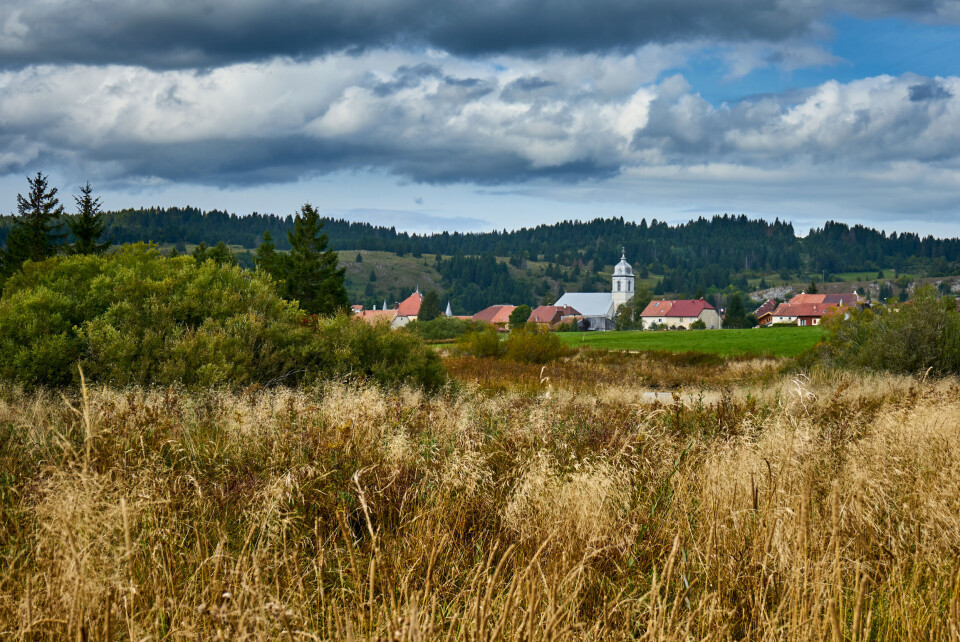-
Festivals, holidays and places to visit in France in April 2025
Including a gladiator battle in a Roman arena, an international garden festival and the Paris marathon
-
Many Société Générale customers to be charged additional fees from April
There is some good news for international banking and instant transfers, however
-
Why gas prices in France are rising in April - and by how much
It comes after six consecutive monthly rises. Try these tips to reduce your bills
‘Coldest town in France’ sees first-ever October with no sub-zero days
Mouthe in Doubs is seeing fewer and fewer freezing days. This comes as October emerges as the warmest on record in France

The ‘coldest town in France’ has had its first October without a frost in almost 150 years, since records began in the year 1880.
Mouthe, in Doubs (Bourgogne-Franche-Comté) near the Swiss border, is officially the ‘coldest town’ in the country by temperature records.
Located in a valley where cold wind stagnates, between two mountain ranges, it has never finished an October without a frost or temperatures hitting zero degrees Celsius.
And yet, October 2022 marks the first time since records began that no single day saw zero degree temperatures. In previous years, there have always been at least two frosty days in the month.
Overall, weather trends in the town show a very clear drop in the number of days with low temperatures over the past few years, as climate change intensifies.
François Jobard, a meteorologist at forecaster Météo-France, published records showing the phenomenon on Twitter.
He said: "The average number of frosts in October was 18 days over the period 1951-1980. [There were] 28 in 1974 and 1888; two in 2004 and 2006, and zero in 2022.”
Mouthe is often seen as a good indicator of the progress of climate change in France overall. It is the location of the lowest-ever temperature recorded in mainland France: -36.7C, on January 13, 1968.
Forecaster Étienne Kapikian also tweeted that the “exceptionally mild” October has also been noticed by other weather observatories.
Semestre mai-octobre historiquement chaud au Mont #Aigoual (Cévennes, 1567m d'altitude) avec une température moyenne de🌡️14.1°C, soit 3.4°C au-dessus de la moyenne 1991-2020, et pulvérisant le précédent record de 2003 (12.2°C) de 1.9°C ; données depuis 1896. https://t.co/Xbk1GGotGs pic.twitter.com/N862JfudTJ
— Etienne Kapikian (@EKMeteo) October 31, 2022
For example, in the Cévennes, average temperatures for October have been 2C above previous records, and 3.5C higher than the seasonal norms for the years 1991-2020. The average temperature of 14.1C during the month “pulverised” the previous record of 12.2C from 2003, he said.
Data has been collected there since 1896.
‘Warmest October ever recorded’
It comes as October was the “warmest October ever recorded in France since 1945”, said La Chaîne Météo last week.
This included an average of 3.7 degrees higher compared to seasonal norms, said head of forecasting Pascal Scaviner.
The previous records date from 2006 (2.37C higher) and 2001 (2.69C higher). Temperatures peaked on October 27, with average temperatures of 28-30C in the southwest. Similarly high temperatures were seen in Figari in Corsica the week prior, with 32.5C recorded – a temperature not seen since 2006.
Read more: This October set to be warmest on record in France
Christine Berne, meteorologist at Météo France, said: “This year has clearly been a whirlwind. With the exception of a short period in September, we have been witnessing particularly hot months non-stop since April.
“We’re getting the impression that the atmosphere is finding it increasingly difficult to cool down.”
What will winter 2022 be like after a hot summer and mild autumn?
Despite the unseasonable highs over summer and autumn, Météo France is so far suggesting that winter may be:
- Average for the season in terms of temperatures
- Not as rainy in the northeast
- More rainy in the southwest and western Mediterranean
Temperatures are expected to be much closer to the seasonal average as winter arrives, it said.
In a statement, it said: “The most likely scenario for the November-December 2022-January 2023 quarter is the predominance of anticyclonic conditions, with calm and dry weather, over the European continent.”
However, it did not rule out a few peaks and troughs in temperature. Predictions suggest that there is a 30% chance that temperatures could be higher than average, compared to a 20% chance that they could be lower. Overall, the probability that temperatures will be about average is at 50%.
Météo-France added: "This update does not amount to a prediction of the details of the weather conditions of the coming months day by day, or even week by week. It only aims to determine the trends expected on average over the quarter.”
There are no definite predictions when it comes to rainfall yet, the forecaster said, although it is already slightly worried that there will not be enough to make up for the drought conditions seen over the summer and autumn., especially in some areas.
It said: "A drier-than-normal scenario is likely from the eastern Mediterranean to central Europe and north-eastern France, while a wet scenario is more likely over northern Europe and the western Mediterranean.”
However, it once again said that these forecasts are only “large-scale” and “probabilistic”, and vary “greatly depending on the location”.
Related articles
Warm weather predicted to last in France until end of October
























